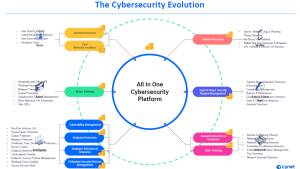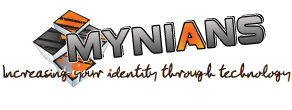Secure Your Digital Life: Navigate Technology with Confidence
Stay informed, protected, and empowered in the ever-evolving landscape of technology and security.
In today’s digital world, technology is woven into every aspect of our lives. From connecting with loved ones to managing our finances, we rely on technology more than ever. However, with these advancements come new challenges and security risks. Cyber threats are increasing, data breaches are becoming more common, and our personal information is at stake. That’s why understanding technology and security is no longer optional; it’s crucial for staying safe and empowered digitally. This page is designed to provide you with the knowledge and resources you need to protect yourself and your digital footprint.
Cybersecurity: Protecting Your Digital World
Cybersecurity refers to the practices, tools, and technologies designed to protect computer systems, networks, and digital data from unauthorized access, damage, or theft. It’s essential because cyber threats can lead to identity theft, financial losses,  disruption of services, and damage to reputation. Common threats include malware (viruses, worms, trojans), phishing (fraudulent emails designed to steal information), and ransomware (malicious software that holds data hostage). Identifying vulnerabilities is the first step towards prevention, including keeping software updated, using strong passwords, and being cautious of suspicious links and attachments. We provide detailed guides and specific steps you can take to improve your cybersecurity.
disruption of services, and damage to reputation. Common threats include malware (viruses, worms, trojans), phishing (fraudulent emails designed to steal information), and ransomware (malicious software that holds data hostage). Identifying vulnerabilities is the first step towards prevention, including keeping software updated, using strong passwords, and being cautious of suspicious links and attachments. We provide detailed guides and specific steps you can take to improve your cybersecurity.
Data Privacy: Your Right to Control Your Personal Information
Data Privacy is the right of individuals to have control over their personal information and how it is collected, used, and shared. With increasing data collection online and through our devices, being mindful of your data privacy is more essential than ever. Regulations like GDPR (General Data Protection Regulation) and CCPA (California Consumer Privacy Act) aim to protect people’s rights over their data. By understanding how websites and apps share and use data, you can protect yourself through privacy-setting configurations and being cautious about the information you share. We provide straightforward use guides on understanding and implementing privacy settings effectively.
Network Security: Securing Your Digital Connections
 Network security involves securing computer networks and infrastructure from unauthorized access, use, disclosure, modification, or destruction. A secure network is vital for personal and business use, ensuring data integrity and confidentiality. Weak network security can lead to data breaches and other significant security issues. Securing your WI-FI network includes using a strong password and enabling encryption. Firewalls are essential hardware or software that monitor network traffic and block unauthorized access, while VPNs help protect your online activity and hide your IP address. Understand these components and how best to utilize them with our guide.
Network security involves securing computer networks and infrastructure from unauthorized access, use, disclosure, modification, or destruction. A secure network is vital for personal and business use, ensuring data integrity and confidentiality. Weak network security can lead to data breaches and other significant security issues. Securing your WI-FI network includes using a strong password and enabling encryption. Firewalls are essential hardware or software that monitor network traffic and block unauthorized access, while VPNs help protect your online activity and hide your IP address. Understand these components and how best to utilize them with our guide.
Cloud Security: Protecting Your Data in the Cloud
cloud Security protects your data, applications, and infrastructure running in the cloud computing environment. The cloud’s increased popularity presents significant challenges regarding security. Common cloud vulnerabilities include misconfigurations, unauthorized access, and data breaches. Cloud users can secure their data effectively by using strong authentication and encryption tools and practicing secure access management. Explore our practical guides designed to help you understand these issues and how to protect your cloud data better.
Emerging Technologies: New Opportunities and New Challenges
Emerging technologies like Artificial Intelligence (AI), Blockchain, and the Internet of Things (IoT) offer incredible opportunities and introduce new security challenges. AI can be used for both securing data and for malicious purposes. Blockchain’s decentralization brings security but requires diligent key management practices. IoT devices collect significant amounts of personal data and must be treated carefully to avoid breaches. Learn how to remain safe in this environment as this digital landscape evolves.
Latest Technology & Security News
Tools & Resources: Protect Yourself Now
Here are some helpful tools and resources you can use to enhance your technology and security practices
-
- List of Tools:

- Virus Software (Our MSP services include Cynet on every PC or Server)
- Password Manager – (1Password)
- VPN services(NordVPN)
- Browser Extensions for Privacy (duckduckgo)
- External Links:
- Links to the FBI Internet Crime Complaint Center
- Links to the FTC Identity Theft resource
- Links to other prominent cybersecurity websites Adam Shostack & friends, CIO , CSO, Cybersecurity Insiders , Daniel Miessler, Dark Reading, Errata Security, Graham Cluley, Infosecurity Magazine, IT Security, MITRE ATT&CK
- List of Tools:
The Ultimate Cybersecurity Checklist:
Let’s dive into the actionable steps you can take right now. We’ve organized the checklist into categories for easier navigation.
- Be Cautious of Email Attachments & Links: Avoid opening suspicious attachments or clicking on links from unknown senders.
- Review Privacy Settings: Adjust the privacy settings on your social media accounts, apps, and online services to control who can see your information.
- Use a VPN: A VPN encrypts your internet traffic, protecting your online activity from prying eyes, especially on public Wi-Fi.
- Delete Unused Apps and Accounts: Regularly clean up old apps and accounts you no longer use.
- Enable Automatic Software Updates: Ensure your operating systems, browsers, and applications always run the latest versions with security patches.
- Secure Your Wi-Fi Network: Use strong encryption (WPA3 or WPA2) and a complex password for your home Wi-Fi.
- Lock Your Devices: Use a passcode, fingerprint, or facial recognition to prevent unauthorized access to your phone, laptop, and tablet.
- Avoid Public Wi-Fi for Sensitive Tasks: Avoid accessing banking or other sensitive data on public Wi-Fi networks. Consider using a VPN.
- Use Unique, Complex Passwords: Avoid reusing passwords across multiple accounts. Use a mix of uppercase and lowercase letters, numbers, and symbols.
- Implement a Password Manager: Tools like LastPass, 1Password, or Bitwarden can securely store and manage all your passwords.
- Enable Multi-Factor Authentication (MFA): Add an extra layer of security beyond just a password. Use authentication apps, SMS codes, or hardware keys when available.
- Regularly Update Passwords: Change your passwords periodically, especially on critical accounts.
Staying safe online
Cybersecurity isn’t a one-time fix; it’s an ongoing process. Use this checklist as a starting point and commit to making these best practices a regular online routine. By taking these simple steps, you can significantly reduce your risk of falling victim to cybercrime and enjoy a safer online experience.
Start working your way through this checklist today. Please share it with friends and family to help them stay safe online, too!
Ready to Enhance Your Online Security?
Ready to explore how our technology and Cynet Security can help your business be secure? Contact us today to learn more about how Mynians can help your business! We provide free consultations to tailor solutions for your business needs. Phone: 407-374-2782 Email: info@mynians.com Website: https://mynians.com Let us help you take your business to the next level with Mynians, your Trusted Managed IT Service Provider!

